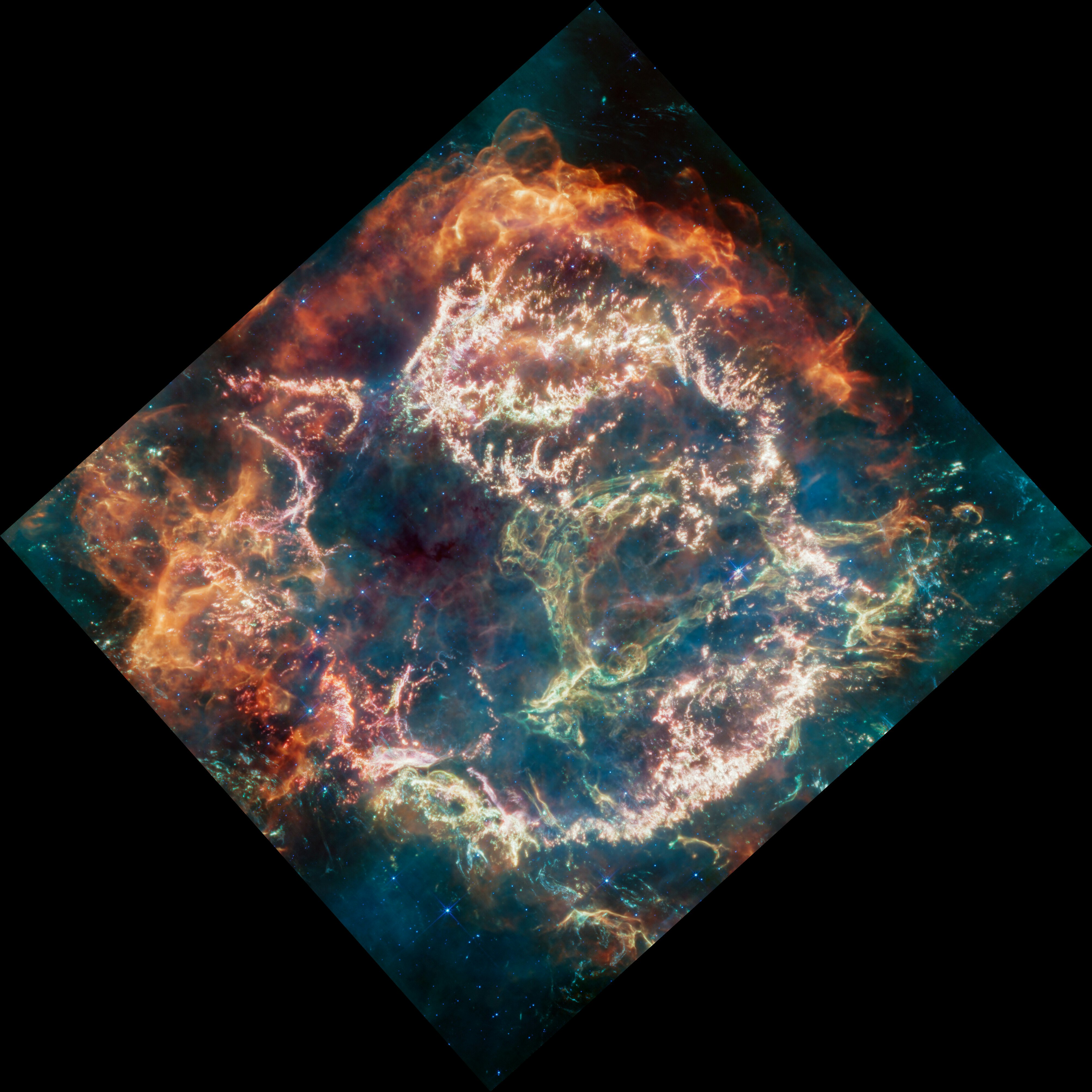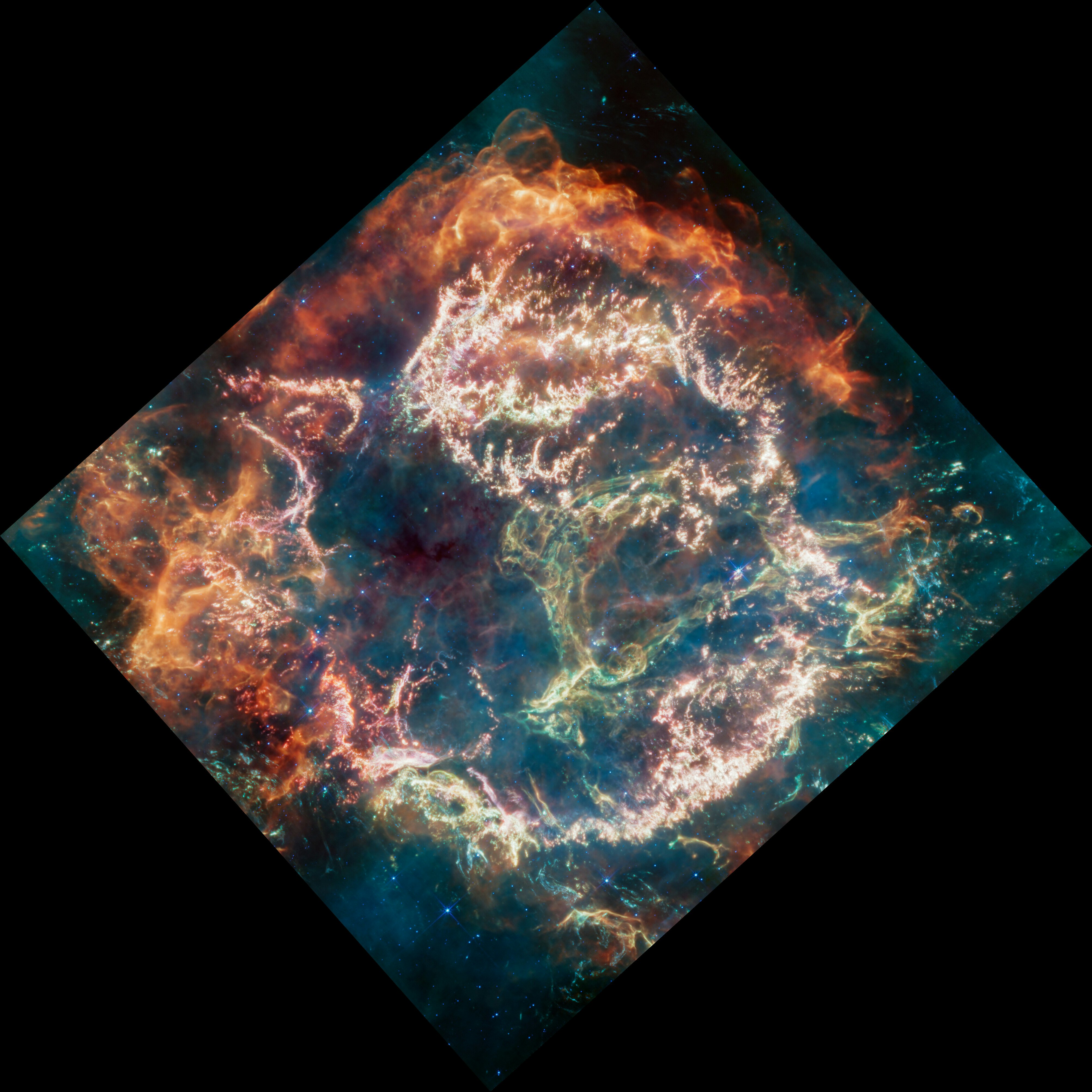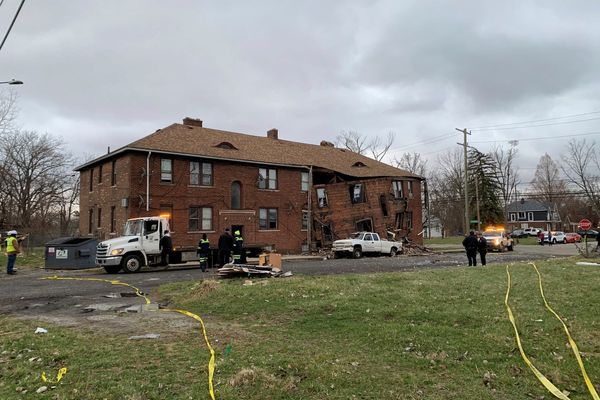
Dusty debris from the destructive death of a giant star glows fiery orange and red as it collides with interstellar dust.
NASA’s James Webb Space Telescope (JWST) recently captured this stunningly detailed image of Cassiopeia A, the remnants of a giant star’s cataclysmic death throes. It’s the most recent supernova in our galaxy, and astronomers have studied it extensively, hoping to reconstruct something the life and death of a giant star from the debris of its final explosion. JWST’s latest image of the cosmic debris cloud, taken with the Mid-Infrared Instrument (MIRI), may shed some light on how the explosive demise of giant stars helps scatter the ingredients for life throughout the galaxy.
A Dusty Dilemma
There used to be a massive star 11,000 light years away, toward the constellation Cassiopeia, but about 340 years ago it vanished in a brilliant burst of light. The giant star had burned up the last of its fuel, and without the pressure of nuclear fusion to counter the star’s crushing weight, its outer layers collapsed inward in an instant. That collapse triggered a tremendous explosion, one of the largest and most powerful in the universe, that blasted the former contents of the star outward into space.

Today, the slowly spreading cloud of gas and dust that used to be a star is about ten light years wide, and its outer edge is pushing into the shell of cooler gas and dust that once surrounded the star system. The heat from that collision shows up as ripples of orange and red in the false-color version of this MIRI image (part of image processing involved translating infrared wavelengths into colors our eyes can actually see).
Astronomers hope the new JWST data, along with years of other observations in every possible wavelength of light, will hold some clues about how galaxies like ours get their stockpile of dust and heavy elements. That material is essential for forming planets –—and life. And all of it was once part of the guts of massive stars that died in fiery explosions like Cassiopeia A.
“It’s difficult to explain the origins of this dust without invoking supernovae, which spew large quantities of heavy elements (the building blocks of dust) across space,” says the European Space Agency in a recent announcement. “They spread elements like the calcium we find in our bones and the iron in our blood across interstellar space, seeding new generations of stars and planets.”
Even very young galaxies seem to have healthy supplies of dust – more than it seems like supernovae should have been able to produce. That’s a mystery astronomers hope Cassiopeia A can help them solve: how is there so much dust?







